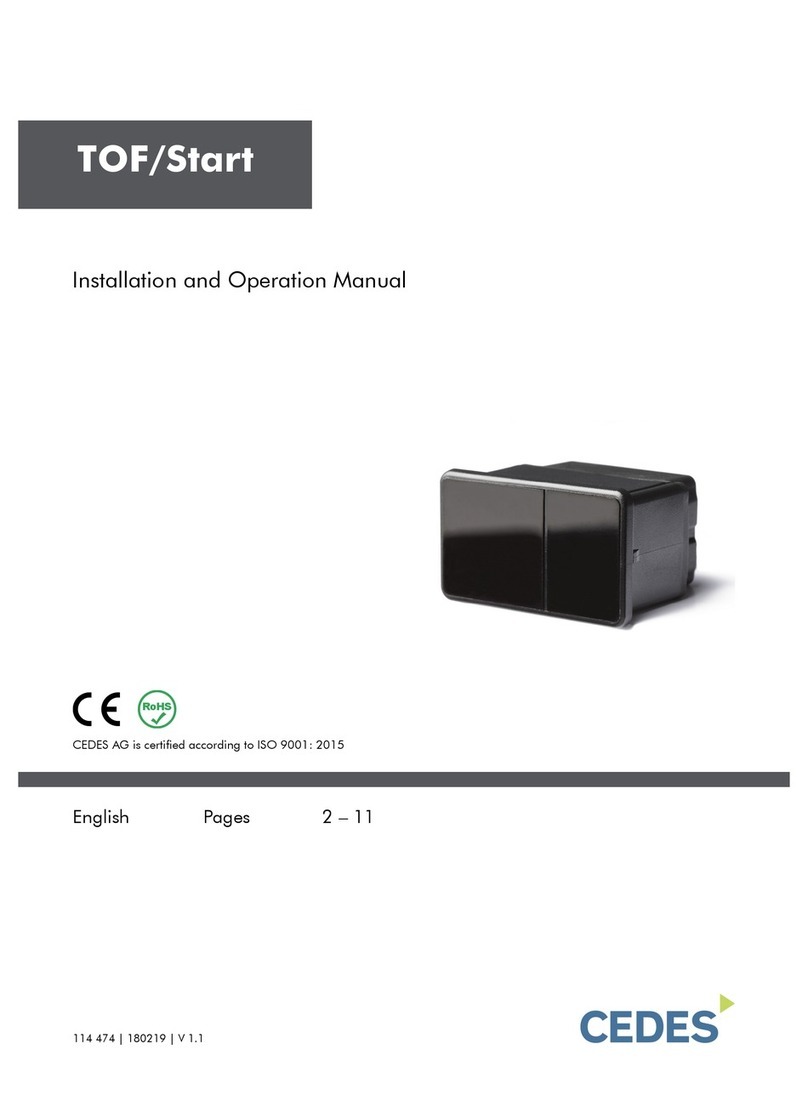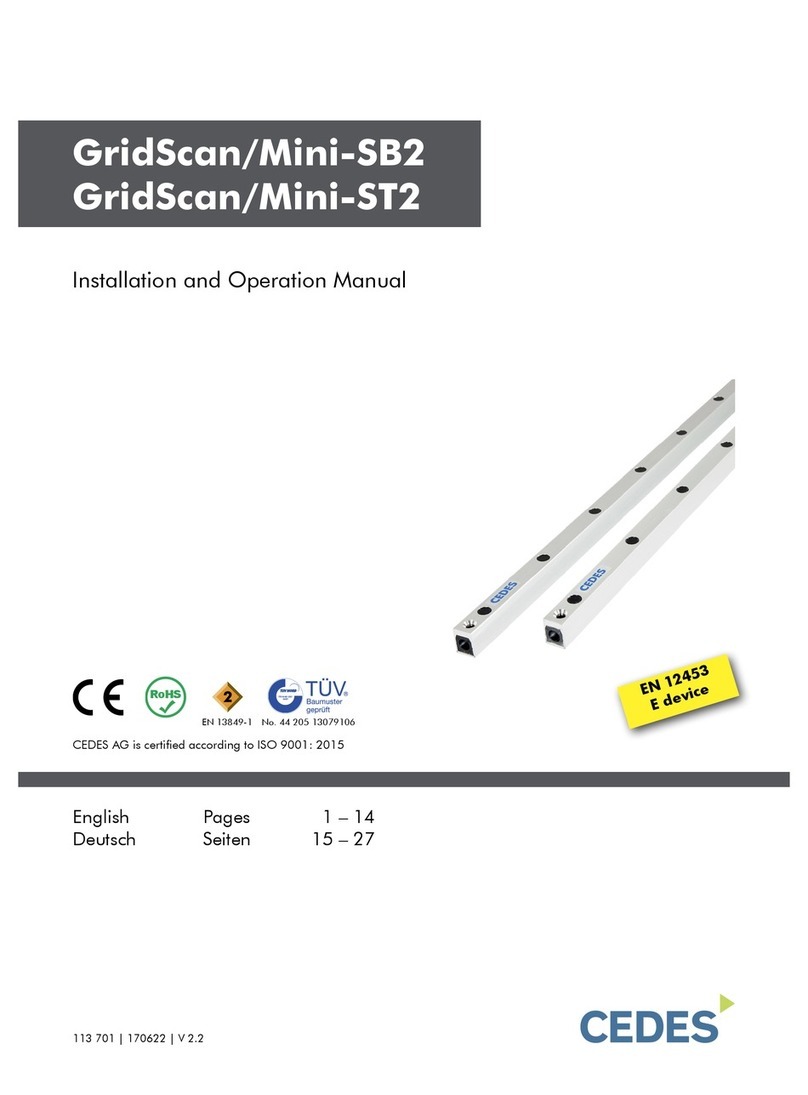
CabSafeä Door Protection
Quick Start Guide
Thank you for purchasing the CEDES CabSafe elevator
door protection system. This “Quick Start” guide
provides basic information for the system concept. This
document does not replace the installation and operating
instructions for the components included in this kit and
available online at www.cedes.com.
Consult the installation and operation instructions
relevant to the individual devices included in this kit for
additional information regarding the system, additional
warnings, requirements and device-specific
specifications:
115 944 CabSafe System Operating Manual; and
116 106 cegard/Pro (CabSafe 2D) Operating Manual
Download these documents at: www.cedes.com.
For glass elevators, please see operating instructions
for additional requirements.
Important Notes:
• This door protection system must only be installed and
commissioned by qualified elevator installation
personnel.
• Before beginning installation of this door protection
system, you must be sure that the elevator has been
properly placed “Out of Service” to ensure that the
elevator and related components will not be allowed to
move during the installation. You must follow all
applicable safety protocols, rules and regulations that
apply.
• Upon completion of the installation and
commissioning of this door protection system,
qualified elevator installation personnel must ensure
that the installation complies with all applicable local,
regional and national regulatory requirements, and
that the operation of the elevator control system,
including this light curtain, perform in accordance with
the application and regulatory requirements.
System Overview:
This CabSafe system is designed for use as part of an
elevator door protection system in accordance with
ASME ANSI A17.1-2019 / CSA B44-19. The CabSafe
2D forms an invisible field of criss-cross beams that
detect the presence of persons or objects between the
doors. The CabSafe 3D detects persons or objects
approaching the elevator entrance. These devices are
connected to a CabSafe Controller. When an object is
detected, the output from the CabSafe controller
changes state to indicate that the doors should be
reopened since a person or object is present in the
respective detection field.
CabSafe 2D (cegard/Pro):
The CabSafe 2D transmitter and receiver are normally
mounted on the doors in a center-opening application or
on the door and the slam post in a side-opening
application. The maximum door speed should be less
than 0.5 m/s (1.64 ft/s). The lowest beam must be less
than 25 mm (1 inch) from the sill. The optical Axis must
be within ± 5˚ between the transmitter and receiver.
Attach a felt strip in the center of the associated
mounting or spacer profile to reduce any vibration that
might occur. Once the CabSafe 2D components are
mounted, connect the cables from the devices to the
CabSafe Controller. Then secure the cables in place,
allowing enough slack so that they can bend freely,
without becoming snagged on moving parts. Use cable
guide wires on door(s) to prevent excessive cable sway.
CabSafe 3D:
The CabSafe 3D is a time-of-flight (TOF) transom-
mounted device that projects a detection field in front of
the elevator cab entrance. For OEM applications where
the transom already has a cut-out for the sensor, the
mounting is straightforward using an optional backplate
included with the sensor and two (2) security screws
(spanner type).
The cable must exit right from the sensor as you
look into the cab (regardless of left-open, right-open
or center-open application).
The above figure shows a “Sensor Mounted in Center”
For center mounting applications, the sensor should be
centered in the opening as shown above. For side-
mounting applications, the sensor must:
• Be positioned no more than 240 mm (9.5 inches)
from the slam post (Distance “D”).
• Be less than 300 mm (12 inches) from the landing
side of the landing door (Distance “S”).
Route the cable from the CabSafe 3D to the CabSafe
controller. Connect the cable to the CabSafe 3D and
then secure the sensor in the transom. An optional
stainless-steel back of transom bracket is also available
for modernization applications.
CabSafe Controller:
CabSafe controllers are available with a wide ranging or
24 V DC ± 20% input power. The CabSafe sensor
components plug into the CabSafe Controllers the same
way for all variants. Namely,
• CabSafe 2D Transmitter = 3-pole Plug
• CabSafe 2D Receiver = 4-pole Plug
• CabSafe 3D Sensor = 6-pole Plug.
Power is connected to the corresponding pins on power
connector. See labels on device for details.
CabSafe 200 with
Relay Output
85-265 VAC /
19.2-37 VDC /
120-300 VDC
CabSafe 100 with
Relay Output
19.2-37 VDC
CabSafe 100 with
Solid-State Output
19.2-28.8 VDC























